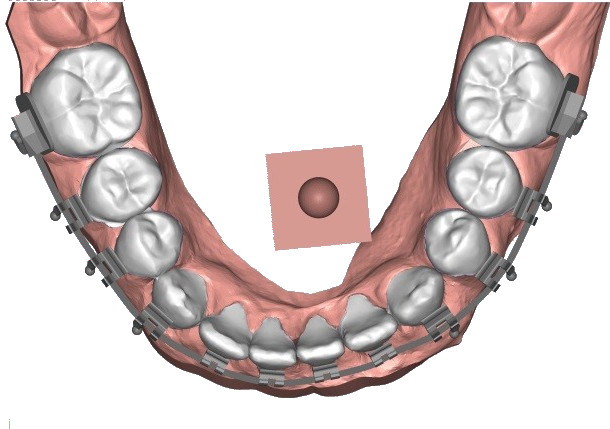Authors : Nearchos Panayi (1), Apostolos I. Tsolakis (2)
1: PhD candidate, Athens Medical School, National and Kapodistrian University of Athens, Greece, Orthodontic private practice, Limassol, Cyprus. Email: dr.panayi@cytanet.com.cy
2:Associate Professor, Department of Orthodontics, National and Kapodistrian University of Athens, Greece Adjunct Associate Professor, Orthodontic Department, Case Western Reserve University, USA
Introduction
Digital technology advancements have been introduced into the orthodontic profession in the last few years; IOS, CBCT and CAD/CAM technology. As a result of the above, customized fixed orthodontic appliances production was made possible by a few manufacturing companies. An attempt for in-house designing and manufacturing of customized fixed orthodontic appliances using dedicated orthodontic CAD software was never undertaken until now. In our case report presented, novel orthodontic CAD software named Deltaface UBrackets® (Coruo, Limoges, France) was used to design in-house customized orthodontic brackets. 3D printing was performed in the orthodontic office using a permanent crown ceramic resin.
Materials and Methods
Full records including 3D intraoral scan were taken from a 13 old healthy boy. The scan was imported in UBrackets® software and digital set-up was done. Continuously automatic placement of virtual brackets was done (Fig. 1) and using various manipulators (mesiodistal, labiolingual, rotational) the brackets were positioned in an ideal position (Fig. 2). Extrusion of the bracket’s bases was done towards the teeth surface. Designing of positioning keys for accurate bonding of the brackets was also performed (Fig. 3) and the brackets, model-brackets, final wire were exported as 3D stl files. The final archwire served as a prototype for all the sequential archwires. 3D printing was done in the office using Formlabs 3B printer (Somerville, Massachusetts, USA) the permanent ceramic crown resin. The brackets then were cleaned in isopropyl alcohol 91% and UV cured for 20minutes.

Figure 1. Automatic placement of the brackets on a 0.018’’x0.025’’ flat archwire.

Figure 2. Manipulator for the three-dimensional positioning of the brackets

Figure 3. Positioning keys design for accurate bonding.
Results
Customized orthodontic brackets were designed using Deltaface UBrackets® CAD software and printed with Formlabs 3B® printer using permanent crown resin. Accurate bonding was performed using positioning keys (Fig. 4) that were designed while a manually bended customized 0.012” NiTi archwire was inserted. The positioning keys were removed using a high-speed airotor following wire insertion.

Figure 4. Customized brackets bonding using the positioning keys.

Figure 5. Removal of the positioning keys and archwire insertion.
Conclusions
The current digital technology allows the design and printing of customized orthodontic brackets using Ubrackets software, a 3D printer and a hybrid ceramic resin in the Orthodontic office.
References
- Panayi NC. DIY Orthodontics: Design It Yourself. In Press, Chicago: Quintessence, 2021.
- Application Guide: 3D Printing Permanent Crowns With the Form 3B [Internet]. Formlabs. 2021 [cited 27 May 2021]. Available from: https://dental.formlabs.com/eu/indications/permanent-crowns-guide/